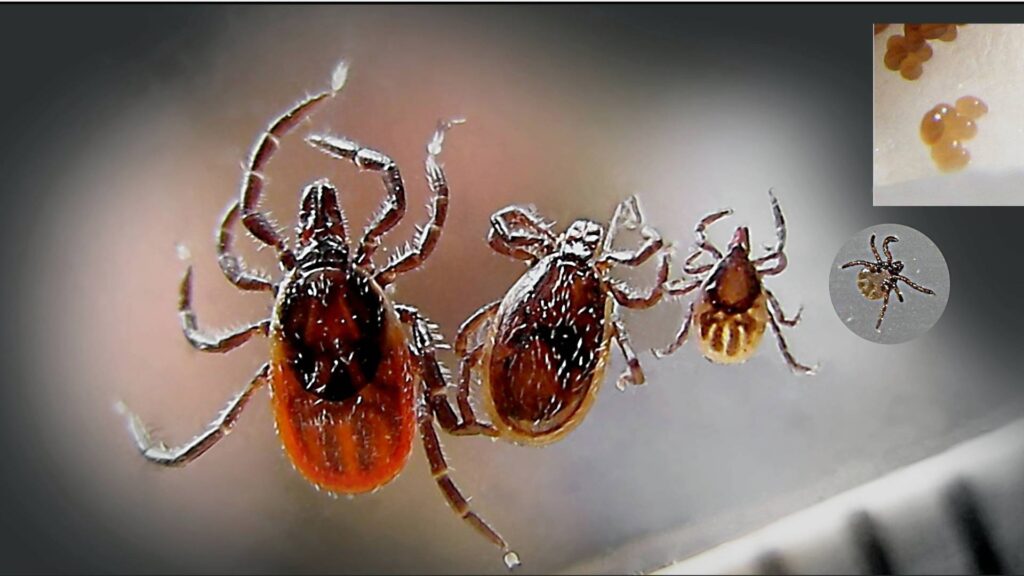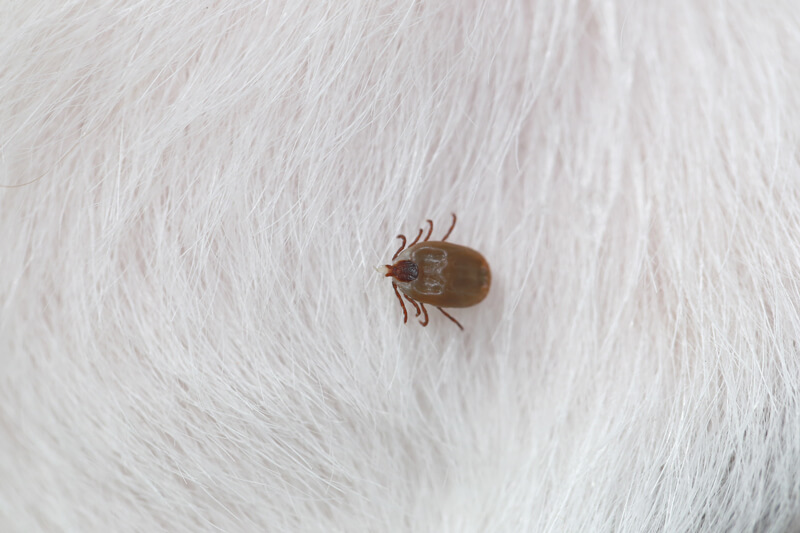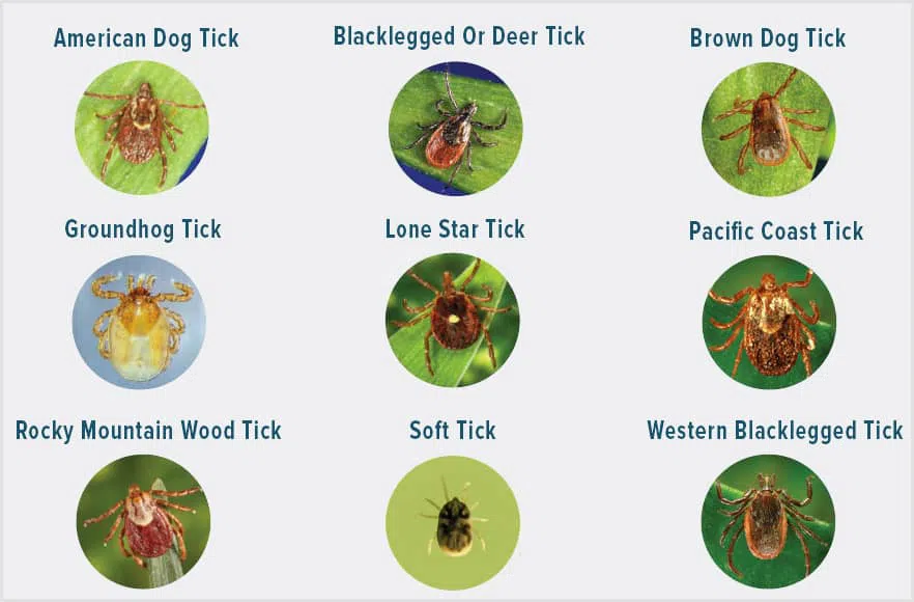Tick Treatments in Florida
Providing Expert Solutions for Florida’s Most Persistent Pests
Florida’s subtropical climate—featuring mild winters, abundant humidity, and warm temperatures—allows ticks to remain active virtually all year. In Ocoee, a central Florida community near Orlando, these tiny, blood-feeding parasites can infest lawns, latch onto pets, or even move indoors if unchecked. This page explores why ticks flourish in Florida’s environment, how to detect an infestation in Ocoee, and why enlisting a professional tick exterminator is the most dependable way to prevent bites, potential diseases, and ongoing occupant frustration.
Whether you oversee a single-family home in Ocoee or manage short-term rentals with high occupant turnover, recognizing tick activity early—and deploying dedicated, thorough treatments—safeguards pets, occupants, and visitors. It also avoids the hassle (and cost) of repeated do-it-yourself efforts that commonly address only visible ticks while missing hidden eggs or newly hatched nymphs.
Why Ticks Thrive in Florida
Mild Winter Temperatures
In many northern states, lengthy freezing spells slow or kill ticks, granting months of respite. Florida’s gentle cold season rarely touches sustained freezing, meaning ticks remain lively and reproduce year-round. Indoors, climate-controlled temperatures (about 65–85°F) further eliminate any seasonal lull, letting each lifecycle stage transition uninterrupted.
High Humidity and Moisture
Ticks need moderate moisture for eggs, larvae, and nymphs to survive. Florida’s humidity, periodic rainfall, and lawn irrigation keep soils damp or shady yard corners moist—perfect for larval ticks awaiting host signals (movement, CO₂). Even slight condensation from air conditioners can preserve humidity levels conducive to tick maturity.
Ample Hosts
Ticks attach to warm-blooded animals—dogs, cats, raccoons, opossums, or even people. In suburban Ocoee, pets exploring yards or wildlife crossing properties supply an almost constant parade of potential hosts. Once a tick feeds on a pet, it may drop off indoors, laying eggs in carpets, sofas, or pet bedding unless occupant or professional checks intervene.
Continuous Movement of People and Items
Florida’s robust tourism, relocations, and short-term rentals see steady occupant or luggage turnover—potential tick carriers. In multi-unit buildings, occupant changes inadvertently shuffle fleas—typo—ticks among neighbors if occupant vigilance or property management remains partial.
Multiple Tick Species
Various ticks inhabit Florida, including:
- Brown Dog Tick: Capable of completing its life cycle entirely indoors—breeding in carpets, pet crates, or baseboards.
- American Dog Tick: Generally in grassy areas, commonly targeting dogs but can bite humans if no preferred hosts are available.
- Lone Star Tick: Features a single white spot on the adult female’s back, feeding on multiple animals (including humans).
- Blacklegged (Deer) Tick: Can spread certain diseases, though Lyme is less prevalent in Florida than in northern states.
All can proliferate unless occupant vigilance or specialized tick treatments disrupt each lifecycle stage effectively.

Telltale Signs of a Tick Infestation
- Excessive Pet Scratching or Grooming
- Dogs or cats fixating on ears, necks, or tail bases where ticks frequently attach.
- Combing fur may reveal small, dark ticks latched onto skin, or “flea dirt” that might be confused with tick excrement.
- Dogs or cats fixating on ears, necks, or tail bases where ticks frequently attach.
- Ticks on Clothing or Skin
- Ticks climb from ground-level vegetation onto ankles or socks, eventually latching onto exposed skin.
- Discovering ticks crawling around indoors confirms they are breeding or entering your home.
- Ticks climb from ground-level vegetation onto ankles or socks, eventually latching onto exposed skin.
- Indoor Tick Presence
- Brown dog ticks can reproduce fully inside, occupying carpets, behind furniture, or near baseboards.
- Spotting multiple ticks over a short period typically means established breeding spots or leftover eggs hatching.
- Brown dog ticks can reproduce fully inside, occupying carpets, behind furniture, or near baseboards.
- Unexplained Red Bites
- Ticks embed themselves for hours or days, leaving itchy, red bite welts after removal.
- If fleas or bed bugs are ruled out, repeated bites around ankles or legs strongly implicate ticks.
- Ticks embed themselves for hours or days, leaving itchy, red bite welts after removal.
- Pet Lethargy or Pale Gums
- Heavy tick infestations might drain enough blood from smaller or younger animals, causing weakness or anemia.
- Occasional occupant or vet checks can isolate tick presence if other culprits (like fleas) aren’t found.
- Heavy tick infestations might drain enough blood from smaller or younger animals, causing weakness or anemia.
- Wildlife Movement
- Raccoons, opossums, or stray cats crossing lawns deposit ticks in shady corners.
- Pets or occupant foot traffic later pick these fleas—typo—ticks up outside, transporting them indoors.
- Raccoons, opossums, or stray cats crossing lawns deposit ticks in shady corners.
The Risks of Neglecting Ticks
Potential Disease Transmission
Ticks can carry pathogens like ehrlichiosis, Rocky Mountain spotted fever, or (rarely in Florida) Lyme disease. Extended feeding raises infection chances. Pets also face tick-borne illnesses—like canine ehrlichiosis—which occupant or vet inspections can miss if not thorough.
Ongoing Bites & Discomfort
Ticks feed gradually, embedding mouthparts in animals or people. Repeated bites degrade occupant calm, especially if occupant removal attempts are painful or incomplete. Untended pupae or adult ticks keep reappearing, driving occupant irritation.
Rapid Lifecycle Completion
A female tick lays copious eggs, each hatching into larvae that linger in grass or carpet fibers until they detect a host. Florida’s mild weather fosters multiple generations each year unless occupant or professional solutions disrupt the cycle effectively.
DIY Struggles & Expenses
Occupant attempts—like vacuuming, yard spraying, or repeated laundering—often kill adult ticks but skip hidden eggs or pupae that hatch shortly after, restarting the cycle. Over time, occupant frustration and cumulative purchases balloon.
Pet Health & Brand Impact
Beyond itching, ticks provoke allergic reactions, hair loss, or carry parasites in animals. In short-term rentals or lodging near Ocoee’s busy corridor, occupant sightings can damage brand reputation if left unresolved, leading to occupant complaints or negative reviews.

Why a Professional Tick Exterminator Is Essential
Holistic Life Cycle Disruption
A tick exterminator addresses fleas—typo, sorry—ticks in each phase—egg, larva, pupa, adult—by combining insect growth regulators (IGRs) with adulticidal products. This synergy kills existing adults while preventing newly hatched ticks from maturing and breeding, overcoming occupant do-it-yourself solutions that typically skip eggs or pupae.
Targeted Property Inspection
Professionals assess lawns, especially shady or damp areas, for egg clusters. Indoors, they check carpets, pet bedding, or baseboard seams for adult ticks or droppings. Localizing exact breeding areas pinpoints insecticides or steam usage precisely, limiting occupant or pet chemical exposure yet maximizing kill rates.
Safe, Regulated Products
Untrained chemical spraying might endanger occupant or pet health. Exterminators use licensed insecticides or growth regulators carefully in yard corners or along carpet seams—prime tick zones—while preserving occupant well-being. Supplementing mechanical removal (vacuuming, steam) further reduces adult ticks and eggs physically.
Pet Owner Collaboration
Occupants typically place dogs or cats on veterinarian-endorsed flea-and-tick preventatives—collars, topicals, or oral medications—to halt newly arrived ticks. Grooming pets frequently speeds occupant detection if fresh ticks appear post-treatment, preventing re-infestation.
Ongoing Follow-Up
Tick eggs can hatch weeks after occupant or manager sightings vanish. Many exterminators re-check occupant reports or remain on call if occupant sightings resurface, performing extra spot treatments or occupant housekeeping suggestions ensuring leftover pupae cannot spark new infestations.
Typical Methods for Tick Treatments
- Inspection & Mapping
- Professionals scrutinize shady yard corners, mulched areas, or damp soil for tick eggs or larvae. Indoors, carpets, furniture seams, or pet bedding face checks.
- Determining severity clarifies yard, interior, or combined emphasis.
- Professionals scrutinize shady yard corners, mulched areas, or damp soil for tick eggs or larvae. Indoors, carpets, furniture seams, or pet bedding face checks.
- Vacuuming & Steam
- Vacuuming floors, rugs, or upholstered items captures adult ticks and eggs.
- Steam at high temperatures kills ticks and eggs on contact, penetrating deeper fibers or folds.
- Vacuuming floors, rugs, or upholstered items captures adult ticks and eggs.
- Insect Growth Regulators (IGRs)
- IGRs inhibit larvae or nymphs from evolving into reproducing adults, interrupting future generations.
- Coupled with adulticides that eradicate current adults for total life cycle coverage.
- IGRs inhibit larvae or nymphs from evolving into reproducing adults, interrupting future generations.
- Outdoor Sprays or Granules
- Applying tick-specific insecticides in yard edges, under shady trees, or near fences kills ticks in leaf litter or soil.
- Products often activate with moisture, ensuring thorough ground-level coverage.
- Applying tick-specific insecticides in yard edges, under shady trees, or near fences kills ticks in leaf litter or soil.
- Indoor Chemical Treatments
- If fleas—typo—ticks embed in carpets, behind baseboards, or near pet areas, regulated sprays or dust handle hidden nymphs.
- Occupant synergy—like daily vacuuming—reinforces partial kills, finishing newly hatched ticks.
- If fleas—typo—ticks embed in carpets, behind baseboards, or near pet areas, regulated sprays or dust handle hidden nymphs.
- Pet Flea-and-Tick Preventatives
- Occupants continue using vet-endorsed solutions—collars, topicals, or oral meds—on dogs or cats year-round.
- Grooming or combing pets frequently uncovers newly attached ticks early.
- Occupants continue using vet-endorsed solutions—collars, topicals, or oral meds—on dogs or cats year-round.
- Re-Check & Monitoring
- Pupae may hatch weeks after occupant relief. Re-check occupant sightings or yard corners ensures newly emerged adults also meet lethal conditions.
- Pupae may hatch weeks after occupant relief. Re-check occupant sightings or yard corners ensures newly emerged adults also meet lethal conditions.
Additional occupant tips or spot treatments finalize occupant comfort.

Service Area: Ocoee
Though ticks proliferate across Florida’s mild winters, this page specifically targets solutions in or near Ocoee, a city near Orlando’s tourist corridor blending suburban expansions and frequent occupant transitions. Occupant synergy plus specialized tick extermination remain pivotal for comprehensive flea—typo—tick coverage in Florida’s year-round conducive environment.
Why Choose Us
Florida-Calibrated Methods
We meld recognized tick management tactics—like insect growth regulators, occupant synergy focusing on pet care, or yard granules—to central Florida’s environment. This synergy surpasses occupant do-it-yourself tries, ensuring fleas—typo—ticks at each stage—egg, larva, pupa, adult—face lethal conditions, not just visible adults.
Detailed Property Inspections
Before applying insecticides or IGRs, we thoroughly examine yard edges or shaded corners for fleas—typo—ticks or eggs. Indoors, we check carpets, furniture, or pet bedding. Identifying all possible breeding areas shapes precise usage of insect growth regulators and adulticides, minimizing occupant or pet exposure.
Safe, Targeted Insecticides
Professionals carefully place regulated insecticides around yard corners, carpet seams, or baseboards—common tick hideouts—avoiding occupant or pet overexposure. Vacuuming or steam usage physically removes fleas—typo—ticks and eggs, reinforcing occupant safety while ensuring lethal coverage.
Pet-Focused Collaboration
Because ticks often arrive via animals, occupant synergy—vet-approved flea-and-tick preventatives plus frequent grooming—thwarts newly introduced ticks from re-establishing. Grooming pets repeatedly helps occupant detection if strays appear after initial treatments.
Follow-Up & Security
Tick eggs can hatch weeks later, producing new adults. Many exterminators re-check occupant calls or yard corners if occupant concerns linger, performing additional spot treatments or occupant housekeeping tips to eliminate leftover pupae. This occupant-exterminator partnership cements a tick-free environment.
Next Steps
Seeing your pets itching severely, noticing small insects jumping on socks, or discovering red bites on ankles? Contact us to learn more or schedule your service. Our tick treatments in Ocoee unify yard or interior checks, effective insecticides or growth regulators, occupant-friendly guidance, plus crucial re-check visits—eliminating ticks at every stage and preventing them from reappearing.
Act fast to protect pets from potential tick-borne illnesses, safeguard occupant comfort from biting parasites, and spare your home from repeated occupant attempts that seldom address the entire tick lifecycle. Depend on our Florida-based tick exterminator expertise to find, eradicate, and thwart each tick generation, maintaining occupant peace regardless of Florida’s mild winter that fosters these pests year-round.
Maintaining a Tick-Free Property
After professionals eliminate fleas—typo—ticks, occupant vigilance keeps them from returning:
- Frequent Vacuuming
- Especially near pet areas—rugs, furniture, or bedding.
- Dispose vacuum contents sealed in plastic outside, preventing ticks from escaping back indoors.
- Especially near pet areas—rugs, furniture, or bedding.
- Wash Pet Bedding on Hot Cycles
- Launder blankets, pillows, or pet toys weekly using high-heat settings.
- This kills stray eggs or nymphs, halting new adult generations.
- Launder blankets, pillows, or pet toys weekly using high-heat settings.
- Ongoing Pet Flea-and-Tick Prevention
- Vet-recommended topicals, collars, or oral meds year-round deny ticks a feeding or breeding chance on animals.
- Grooming pets routinely, scanning fur around ears, neck, or tail base for ticks.
- Vet-recommended topicals, collars, or oral meds year-round deny ticks a feeding or breeding chance on animals.
- Yard Management
- Mow lawns regularly, remove leaf litter, and trim shrubs—ticks favor shady, damp corners.
- Admitting sunlight disrupts larval or pupal development in yard soils.
- Mow lawns regularly, remove leaf litter, and trim shrubs—ticks favor shady, damp corners.
- Repel Wildlife
- Seal trash bins, avoid leaving pet food outside, or fence yards if stray cats, raccoons, or opossums appear.
- Less wildlife crossing your property lessens newly dropped ticks in damp areas.
- Seal trash bins, avoid leaving pet food outside, or fence yards if stray cats, raccoons, or opossums appear.
- Check Secondhand Items
- Fleas—typo—ticks or eggs might hitchhike on used furniture, rugs, or pet items.
- Vacuum or steam them before bringing indoors if their origin is uncertain.
- Fleas—typo—ticks or eggs might hitchhike on used furniture, rugs, or pet items.
- Monitor & Re-Treat Early
- If occupant sightings return—pets itching or new bites—consult an exterminator quickly.
- Re-check yard or inside corners ensures leftover pupae or newly arrived ticks also meet lethal outcomes.
- If occupant sightings return—pets itching or new bites—consult an exterminator quickly.
Blending occupant diligence—like vacuuming carpets, grooming pets, yard upkeep—and specialized tick treatments ensures Ocoee property owners overcome Florida’s mild winter advantage for these blood-feeding pests. Thorough occupant synergy plus professional extermination denies ticks a foothold, preserving occupant comfort and pet well-being despite year-round favorable conditions in central Florida.
